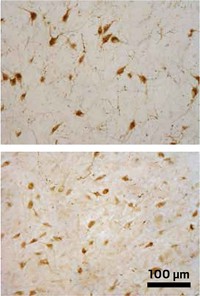Advertisement
Grab your lab coat. Let's get started
Welcome!
Welcome!
Create an account below to get 6 C&EN articles per month, receive newsletters and more - all free.
It seems this is your first time logging in online. Please enter the following information to continue.
As an ACS member you automatically get access to this site. All we need is few more details to create your reading experience.
Not you? Sign in with a different account.
Not you? Sign in with a different account.
ERROR 1
ERROR 1
ERROR 2
ERROR 2
ERROR 2
ERROR 2
ERROR 2
Password and Confirm password must match.
If you have an ACS member number, please enter it here so we can link this account to your membership. (optional)
ERROR 2
ACS values your privacy. By submitting your information, you are gaining access to C&EN and subscribing to our weekly newsletter. We use the information you provide to make your reading experience better, and we will never sell your data to third party members.
Pharmaceuticals
Ritalin Acts Through Two Brain Receptors
Neuroscientists find that the drug commonly used to treat ADHD activates two types of dopamine receptors
by Sophie L. Rovner
March 15, 2010
| A version of this story appeared in
Volume 88, Issue 11
Millions of children take Ritalin (methylphenidate hydrochloride) to treat attention deficit hyperactivity disorder, but the mechanism underlying the drug’s improvement of ADHD symptoms has been uncertain. Now, University of California, San Francisco, neuroscientists Antonello Bonci and Patricia H. Janak and their colleagues have filled in some of the details (Nat. Neurosci., DOI: 10.1038/nn.2506). The team dosed rats with Ritalin to study the drug’s effect on the amygdala, a region of the brain central to learning and emotional memory. The researchers found that Ritalin activates the D2 type of dopamine receptor on neurons in the amygdala and that this interaction is responsible for the drug’s ability to improve focus on a given task. They also discovered that the compound increases the speed of learning and does so by activating the D1 type of dopamine receptor. “Since we now know that Ritalin improves behavior through two specific types of neurotransmitter receptors, the finding could help in the development of better targeted drugs, with fewer side effects, to increase focus and learning,” Bonci says.





Join the conversation
Contact the reporter
Submit a Letter to the Editor for publication
Engage with us on Twitter